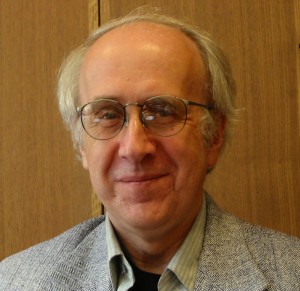A Challenge to Virtual Reality
A. Michael Noll
September 26, 2016
© 2016 AMN
Is today’s virtual reality little more than real fantasy?
Back in the 1960s, Maurice Constant of the National Film board of Canada visited Bell Telephone Laboratories in Murray Hill, New Jersey. I was in the audience listening to him challenge us to make a system that would allow a designer to actually mold with their hands a virtual clay that existed only in the computer – seeing and feeling simultaneously in 3D. I was challenged by this vision, and subsequently designed and built an interactive 3D stereoscopic system that offered tactile feeling through force feedback, along with a stereoscopic display. This project started in the late 1960s and was the subject of my doctoral dissertation. I now challenge today’s haptic and virtual reality communities to create the technology to implement Maurice’s vision.
My research was completed in 1971 and resulted in a US patent[1] and also a published paper[2]. The system I invented had 3D force feedback, in which virtual objects had actual weight, in addition to feel. There also was simultaneous stereoscopic real-time display. The next step in my research would have been a 3D head-mounted display to superimpose the computer-generated 3D imagery on reality with half-silvered mirrors, and some sort of finger feel. However, my career changed direction, as I accepted an assignment on the staff of the President’s Science Advisor, and I did not continue this research.
One application for my 3D “feelie” that I proposed was to facilitate tactile telecommunication. I suggested that a person could feel cloth, or other objects, over distances – in effect, a “touch” telephone.
It is perplexing that with the advances in technology that have occurred since the early 1970s that what is today called “virtual reality” and “haptic” seem behind our vision back then. I therefore issue my challenge to today’s community to create what was envisioned decades ago. Otherwise, much of today’s virtual reality indeed is little more than real fantasy.
[1] Noll, A. Michael, “Tactile man-machine communication system,” US Patent 3,919,691, filed May 26, 1971. http://www.google.com/patents/US3919691 [2] Noll, A. Michael, “Man-Machine Tactile Communication,” SID Journal (The Official Journal of the Society for Information Display), Vol. 1, No. 2, (July/August 1972), pp. 5-11.



